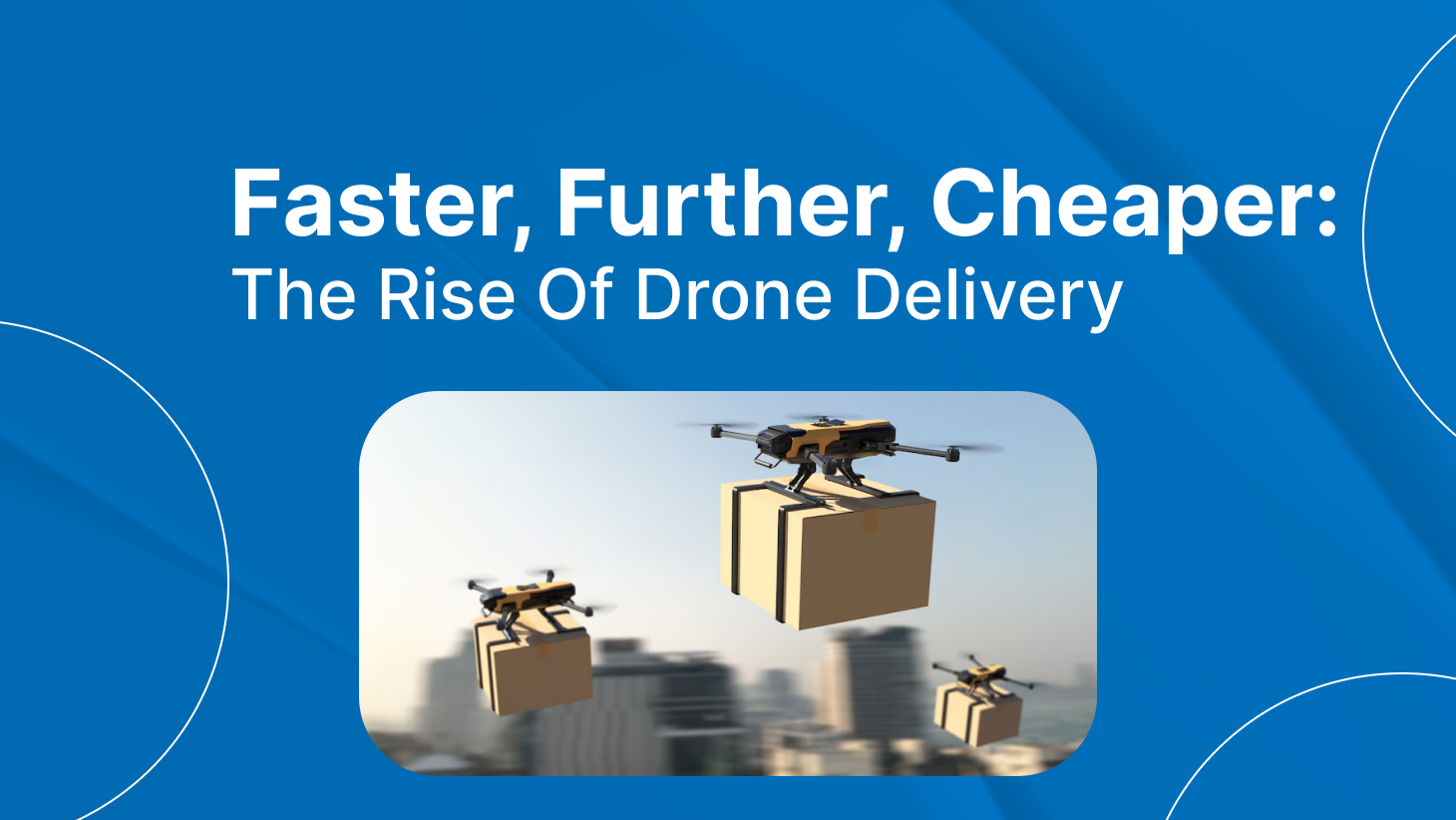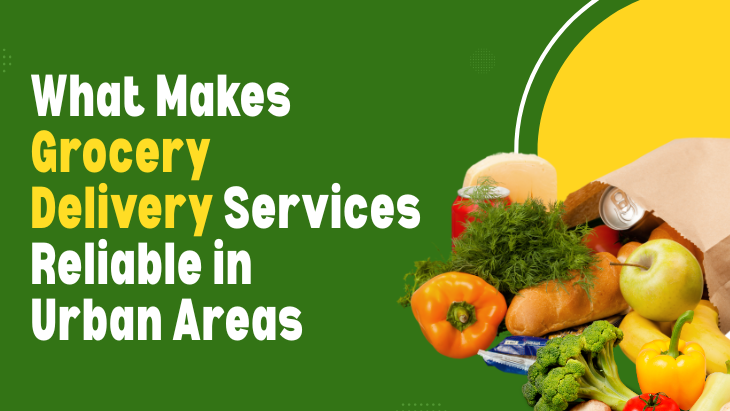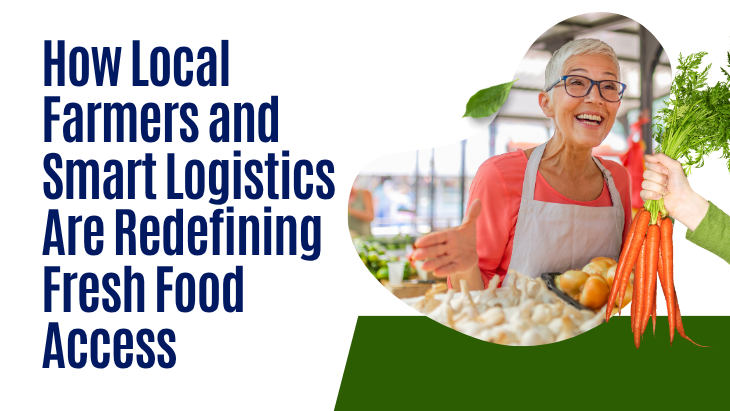In an era where consumer demands, followed by e-commerce orders, require instant delivery services, conventional delivery methods are under pressure. Introduce the age of the drone—an innovative form of service delivery that not only sounds like a futuristic concept but is also given a shot in the real world. Empowered by e-commerce and driven by the expectations of speed and convenience in delivery, drones are expected to disrupt, positively, the last mile of delivery, which is also the most expensive and lengthy part of the delivery chain.
The Evolution of Drone Delivery
Taking a step further toward the commercial application of drones, delivery by drones became relatively popular in the early part of this decade as companies from the tech industry have begun to wade into the field. Originally as a pilot service, overnight services became incorporated either as pilot services or as a part of the company’s existing systems, by key players such as Amazon, Google, and UPS. In the beginning, the use of drones for delivering parts encountered several challenges primarily drawn from legal frameworks, such as those to do with airspace, safety, and privacy. However, the prospects for package delivery using a drone became less rosy depending on the advanced technology and the change of rules.
How Drone Delivery Works
Drone delivery appliances usually comprise a fleet of UAVs, each equipped with sensors, a GPS unit, and payload bays. This commences with an order being placed by a customer over the Internet or through an iPhone app. The order is then fulfilled by the delivery center, where a drone with the package is sent to the delivery location. Also, by using GPS coordinates and, if necessary, the predetermined flight trajectory, a drone independently moves to the designated area. The final step of the delivery process is when the drone lowers the package to the ground or any particular area for delivery.
Advantages of Drone Delivery
Speed: One of the most significant advantages of drone delivery is its speed. Unlike traditional delivery methods that rely on road transportation, drones can bypass traffic congestion and deliver packages directly to their destination, often within minutes of placing an order. This rapid delivery speed is particularly beneficial for time-sensitive items such as medical supplies, food deliveries, and emergency response situations.
Accessibility: Drone delivery can reach remote or hard-to-access areas where traditional delivery vehicles may struggle to navigate. This accessibility is especially crucial in rural communities, mountainous regions, or areas affected by natural disasters, where infrastructure limitations pose challenges for conventional delivery services.
Cost-Effectiveness: In many cases, drone delivery can be more cost-effective than traditional delivery methods, especially for short-distance deliveries or in areas with limited infrastructure. By reducing the need for human labor, fuel consumption, and vehicle maintenance, drone delivery services can lower operational costs and offer competitive pricing to customers.
Environmental Sustainability: Drones powered by electric motors produce fewer carbon emissions compared to traditional delivery vehicles powered by fossil fuels. Additionally, the efficiency gains from direct, point-to-point delivery routes can further reduce the environmental impact of transportation, making drone delivery a more sustainable option for last-mile logistics.
Challenges and Limitations
Despite its promise, drone delivery still faces several challenges and limitations that hinder its widespread adoption:
Regulatory Compliance: The regulatory landscape governing drone operations varies from country to country, with strict regulations imposed by aviation authorities to ensure safety and security. Obtaining the necessary permits and approvals for commercial drone operations can be a complex and time-consuming process, limiting the scalability of drone delivery services.
Payload Capacity: While drones have evolved to carry increasingly heavier payloads, they still have limitations in terms of the size and weight of packages they can deliver. Large or bulky items may exceed the payload capacity of current drone models, necessitating alternative delivery methods for certain types of goods.
Weather Conditions: Adverse weather conditions such as high winds, heavy rain, or snow can disrupt drone operations and pose safety risks. Drones are particularly susceptible to weather-related hazards, which can affect their flight stability, navigation systems, and overall performance.
Public Acceptance: Despite the technological advancements in drone technology, public acceptance and perception of drone delivery remain mixed. Concerns related to privacy, noise pollution, and the potential for accidents or collisions with manned aircraft continue to influence public opinion and regulatory decisions.
The Future of Drone Delivery
Despite these challenges, the future outlook for drone delivery remains promising. Continued advancements in drone technology, including improvements in battery life, autonomous navigation, and sense-and-avoid systems, are expected to enhance the safety, reliability, and efficiency of drone delivery services. Moreover, ongoing efforts to streamline regulatory processes and establish standardized frameworks for drone operations will facilitate the integration of drones into the airspace ecosystem.
Looking ahead, drone delivery has the potential to revolutionize the way goods are transported and distributed, offering unparalleled speed, accessibility, and cost-effectiveness. As businesses and consumers embrace this transformative technology, we can expect to see drones soaring through the skies, delivering everything from groceries and medications to parcels and packages, faster, further, and cheaper than ever before.
Innovations Driving the Future of Drone Delivery
Beyond Line-of-Sight Operations: Current drone delivery systems often rely on operators maintaining visual line of sight with the drone, limiting the range and scope of deliveries. However, advancements in technology, such as satellite communication and long-range telemetry systems, are paving the way for beyond visual line of sight (BVLOS) operations. This capability would enable drones to fly extended distances and reach remote locations, unlocking new opportunities for aerial delivery services.
Urban Air Mobility (UAM): Urban air mobility initiatives aim to integrate drones and other electric vertical takeoff and landing (eVTOL) aircraft into urban airspace for passenger and cargo transportation. By leveraging vertical flight capabilities, these vehicles can navigate congested urban environments more efficiently than traditional ground-based transportation. UAM concepts, coupled with advanced air traffic management systems, could revolutionize last-mile delivery logistics in densely populated cities, reducing traffic congestion and improving delivery times.
Swarm Intelligence: Swarm intelligence involves coordinating multiple drones to work together collaboratively, mimicking the behavior of swarms in nature. By leveraging swarm intelligence algorithms, drone delivery systems can optimize route planning, avoid obstacles, and adapt to dynamic environmental conditions in real-time. This approach enhances the scalability and resilience of drone fleets, enabling them to operate efficiently in complex and dynamic environments.
Vertical Takeoff and Landing (VTOL) Drones: VTOL drones combine the capabilities of helicopters and fixed-wing aircraft, enabling vertical takeoff and landing as well as efficient forward flight. These versatile aircraft can transition seamlessly between hovering and forward flight modes, making them well-suited for urban delivery missions where space is limited. VTOL drones offer greater flexibility and maneuverability than traditional fixed-wing drones, allowing them to access confined spaces and deliver packages with precision.
Applications Beyond Delivery
While drone delivery holds immense potential for revolutionizing logistics and e-commerce, its applications extend beyond package delivery:
Search and Rescue: Drones equipped with thermal imaging cameras, infrared sensors, and high-resolution cameras can assist in search and rescue operations, helping locate missing persons or survivors in disaster-stricken areas. Their ability to access remote or hazardous locations makes them valuable tools for emergency response teams and humanitarian organizations.
Environmental Monitoring: Drones equipped with environmental sensors can monitor air quality, water pollution, and wildlife populations in remote or inaccessible areas. By collecting real-time data and imagery, these drones provide valuable insights for environmental conservation efforts and natural resource management.
Infrastructure Inspection: Drones offer a safe and cost-effective solution for inspecting infrastructure such as bridges, power lines, and pipelines. Equipped with high-definition cameras and LiDAR sensors, drones can capture detailed imagery and 3D models of infrastructure assets, enabling engineers and inspectors to identify defects or structural abnormalities without the need for manual inspections.
Agricultural Services: Drones equipped with multispectral cameras and precision agriculture software can monitor crop health, assess soil conditions, and optimize farming practices. By providing farmers with actionable insights, drones help increase crop yields, reduce resource consumption, and improve overall farm efficiency.
Conclusion
As technology continues to evolve and regulatory frameworks adapt to accommodate innovation, the potential for drone delivery to transform industries and improve the lives of people around the world is undeniable. From speeding up e-commerce deliveries to enabling life-saving emergency response missions, drones are poised to play a pivotal role in shaping the future of transportation and logistics.
While challenges such as regulatory compliance, safety concerns, and public acceptance remain significant hurdles to overcome, the collective efforts of governments, industry stakeholders, and technology innovators are driving the rapid advancement of drone technology. As we navigate towards a future where drones soar through the skies, delivering goods and services faster, further, and cheaper than ever before, the possibilities are truly endless.







Post Comments